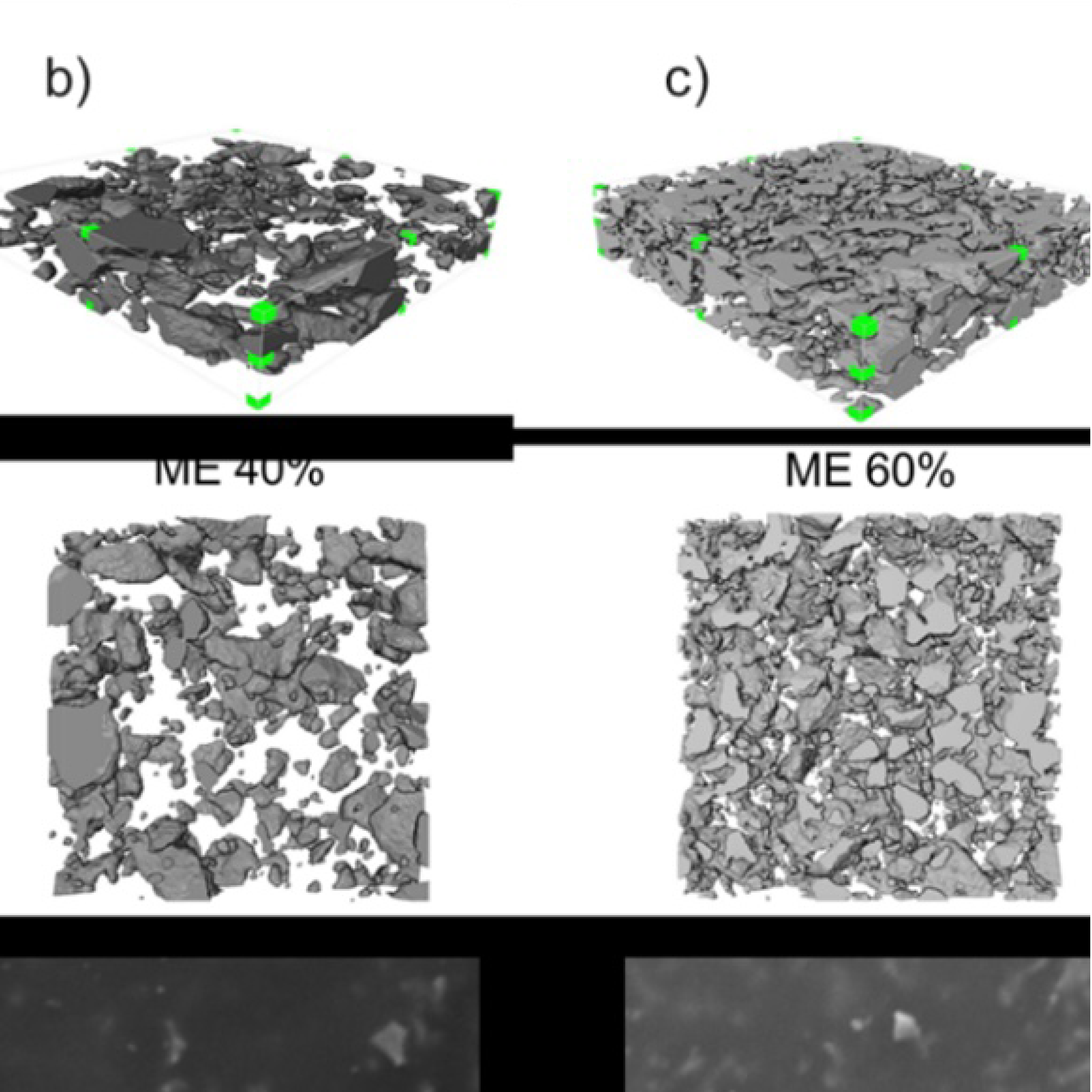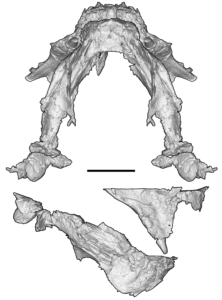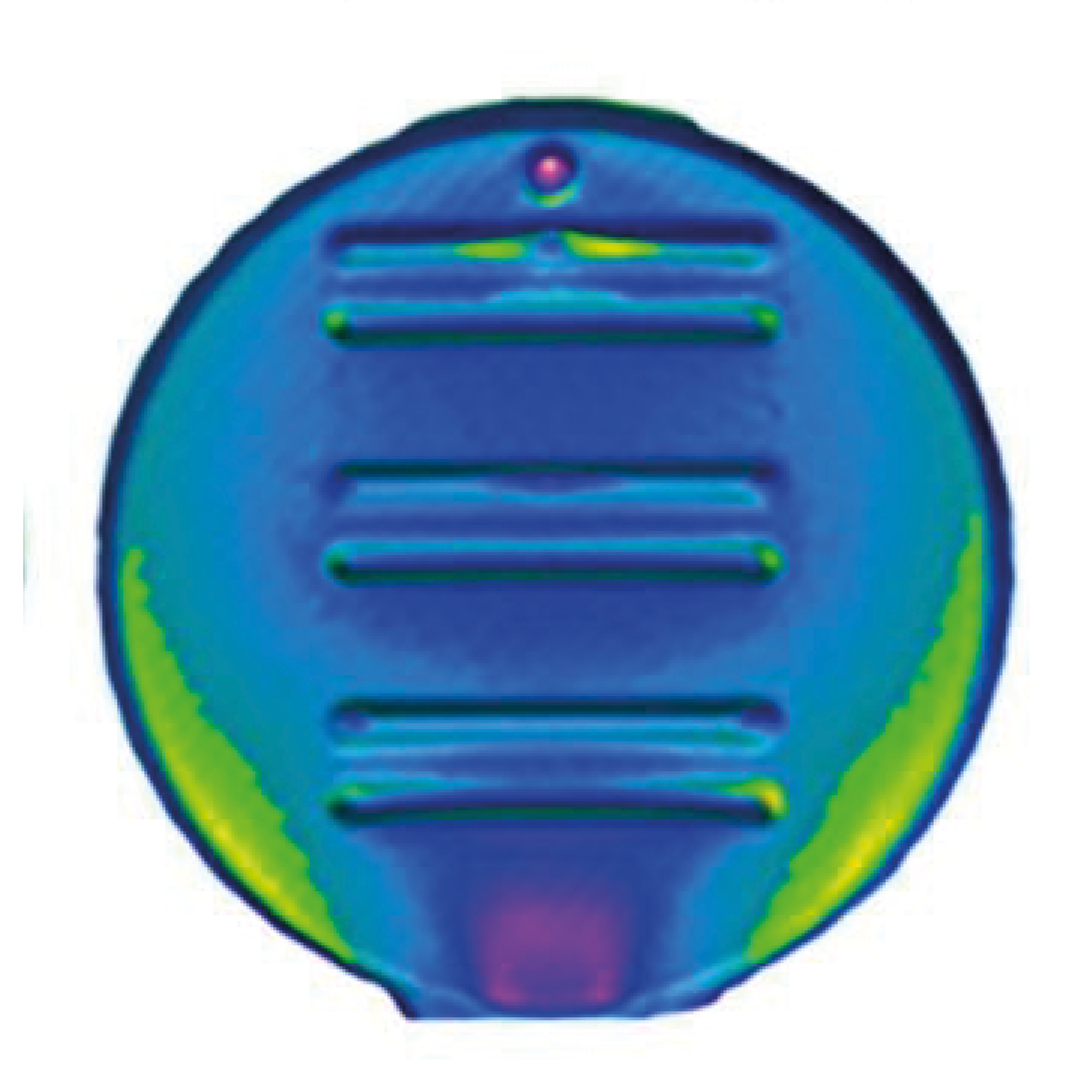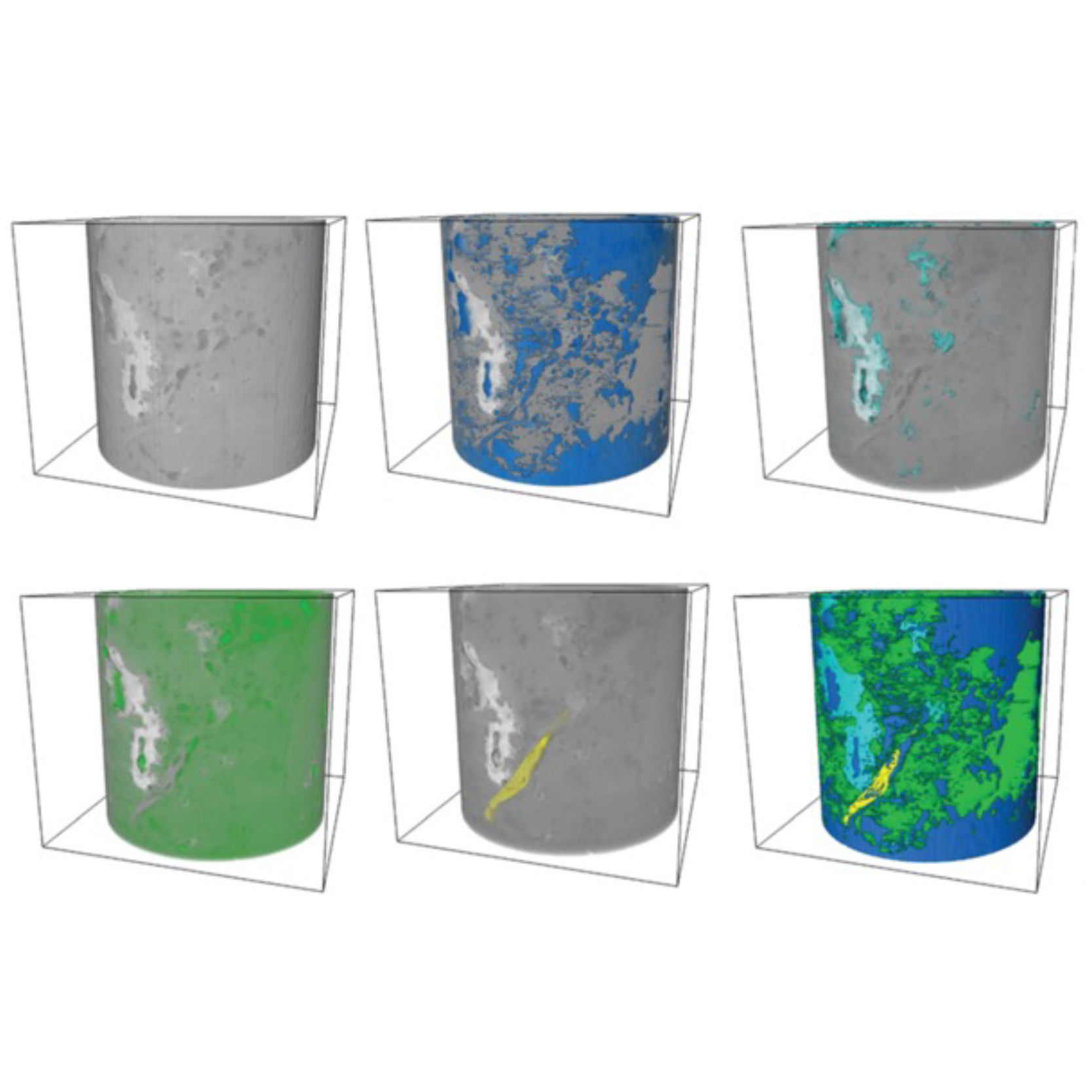
3D Microstructure of Soft Magnetic Elastomer Membrane
Soft magnetic elastomer membranes enable fast magnetic actuation under low fields. In our project, we… Read More
Events & Resources
News, Events and Resources from NXCT Partners
The “Elgin reptiles” are a historic collection of fossils from Northeast Scotland famed for their unusual preservation as “negatives”; moulds of bones and skeletons left in sandstone with little of the original bone remaining. Historically, such fossils have been studied by creating physical casts using materials such as rubbers and plastics that risk damaging the original shape of the impressions.
The “Knock of Alves dicynodont” is a specimen of an unidentified dicynodont, a distant relative of mammals with tusks and a beak, collected near Elgin in 1953 that was ultimately never formally described and its place in the dicynodont evolutionary tree remained unresolved.
µXCT offers a new way to analyse the Elgin void-fossils without the risk of destructive casting. µXCT allowed for the jaws of the “Knock of Alves dicynodont”, including the left tusk, the upper beak and most of the mandible to be digitally imaged and reconstructed in greater detail than previously possible. From this data, the specimen is shown to represent a distinct species to those already known from Elgin (Gordonia traquairi and Geikia elginensis) and to share closer similarities to dicynodonts from Zambia and Tanzania.
Identifying the “Knock of Alves dicynodont” reinforces a palaeobiogeographic connection between East Africa and Scotland in the late Permian period and highlights the locally endemic but phylogenetically independent origins of the Scottish dicynodonts. These results emphasise the importance of Elgin’s Permian fossils in understanding global patterns of tetrapod evolution, the undersampled state of its known fauna, and the opportunities µXCT offers for studying these unusual fossils.
µXCT scanning was performed at the µ-Vis X-ray Imaging Centre of the University of Southampton using their custom 450kVp / 225kVp Hutch scanner with the help and collaboration of Dr. Mark Mavrogordato, Dr. Fernando Alvarez-Borges, and Ronan Smith with three days of NXCT-funded scanning time.

A composite rendering of the reconstructed complete jaws of the “Knock of Alves dicynodont” (scale bar 50 mm).
“This project uses µXCT to describe a fossil from Elgin that has gone undescribed for 70 years and demonstrates the fidelity µXCT offers for reconstructing its original morphology not available through historic casting methods. Identifying its place in the dicynodont evolutionary tree demonstrates the potential µXCT analysis offers for making new discoveries from the historic “Elgin reptiles” collections.”
Scott Reid, MScR student, University of Edinburgh

Soft magnetic elastomer membranes enable fast magnetic actuation under low fields. In our project, we… Read More

Nowadays, the increasing capability of micro-manufacturing processes enables the manufacture of miniature products with extremely… Read More

Injection of CO2 into shale reservoirs to enhance gas recovery and simultaneously sequester greenhouse… Read More